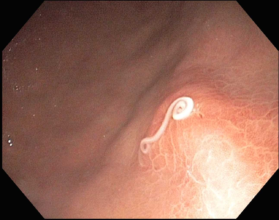Patients with higher levels of Tannerella forsythia bacteria, which can be associated with gum disease, may have a greater risk of esophageal cancer. The increase may be as much as 21% according to a study in Cancer Research. Other bacteria, for example Streptococcus and Neisseria bacteria, were linked to decreased risk. “Our study indicates that
A study presented at the World Congress of Gastroenterology found patients with Clostridium difficile who received opioids during their hospital stay had higher rates of complicated infection and in-hospital mortality and longer length of average hospital stay, compared with patients in the control group. The findings were based on medical records of 302 patients hospitalized
The contribution of environmental factors, diet, and related issues like the status of the microbiome once again come into focus in a recent medical article. A Canadian study in The American Journal of Gastroenterology linked living in a rural area with a lower risk of inflammatory bowel disease. The protective effect was particularly strong among
Link Between Antibiotics and IBD Remains Circumstantial Effect stronger in children, and underscores need for antibiotic stewardship in prescribing for pediatric infections Since inflammatory bowel disease (IBD) is linked to disruption of the intestinal microbiome, antibiotics have come under increasing scrutiny as possible environmental catalysts in IBD – especially if taken in early childhood. So
Researchers at the University of California, Davis found that chronic liver inflammation is associated with a Western diet via the type of bacteria present in the gut. “We know the transition from steatosis, or fatty liver, to steatohepatitis (inflammation in the fatty liver) plays a crucial role in liver injury and carcinogenesis,” Yu-Jui Yvonne Wan, professor
C. difficile infection rates climbed annually from 2000 to 2010, and in 2011 caused almost 500,000 illnesses and killed about 29,000 people in the US according to the CDC. However, preliminary analysis of data from the CDC’s Emerging Infections Program showed that the rate of new Clostridium difficile infections in hospitals and nursing homes nationwide
Considerable interest has arisen in recent years regarding the role of the human microbiome in health and disease, including in inflammatory bowel disease (IBD) — a category of disease that includes ulcerative colitis and Crohn’s disease and is thought to result from the interplay between immune system alterations, environmental triggers, genetic factors, and the interaction
Infestation with benign parasitic worms is one possible explanation for the low incidence of autoimmune diseases and allergies in less developed countries and, conversely, for the sustained increase in such inflammatory conditions in more sanitized and hence “dewormed” industrialized societies. Joel V. Weinstock, MD, of Tufts Medical Center in Boston, writing in Nature in an article
Patients with recurrent episodes of hepatic encephalopathy experience cognitive improvements and significantly fewer hospitalizations after fecal microbiota transplantation than after standard care, according to a phase 1 study designed to evaluate the safety of this treatment. Fecal microbiota transplantation “is a safe procedure in this population with advanced hepatic encephalopathy,” said Jasmohan Bajaj, MD, from
There is an old saying that brains are baffled by the end product of a bull’s digestion. But a similar product, from carefully selected human donors, might reduce recurrent hepatic encephalopathy in liver disease patients and protect their brains, according to Jasmohan Bajaj, MD, of Virginia Commonwealth University in Richmond, Va. “This is the first













